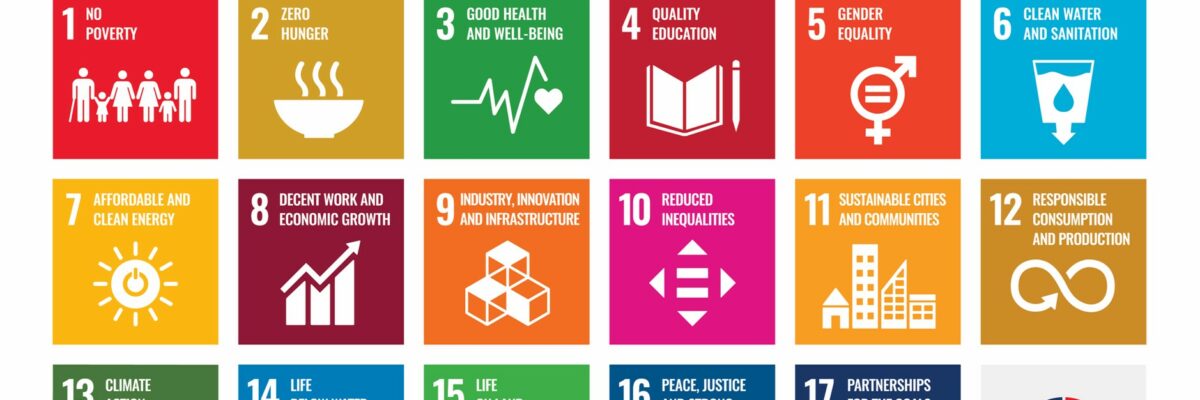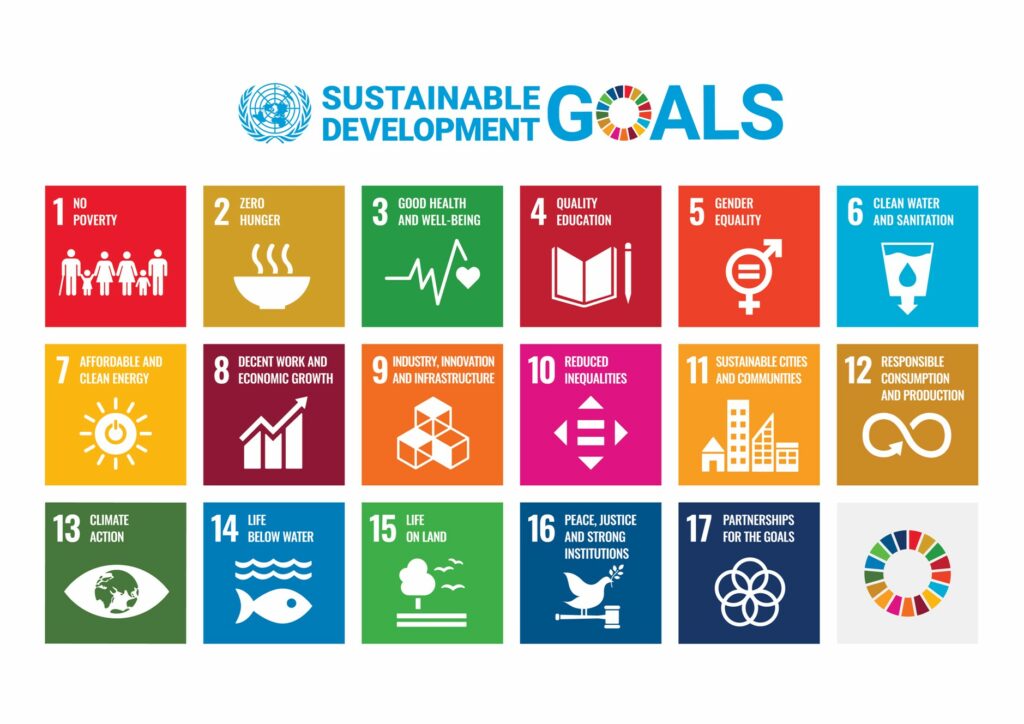

The Connection Between Fashion and the 17 Sustainable Development Goals
Sustainable development means developing without compromising the ability of future generations to do the same. The UN created 17 goals, named Sustainable Development Goals to be met by 2030. Those goals touch upon environmental, social and economic issues. But how do they relate to the fashion industry? Let’s dive into it.
As a big influence on modern communities, the fashion industry is affected by many of the SDGs. Unfortunately, this often highlights the industry’s shortcomings.
Social (Goals #1, #4, #5, #10): The socially focused SDGs aim to end poverty, ensure equality and guarantee safe and fair working conditions. The fashion industry, however, is notorious for exploiting its poorly paid workers, who are mostly women. These workers have to endure very low wages, long working hours, unsafe environments and limited to no opportunities for advancement. A prime example is the incident of Rana Plaza, the tragic collapse of a garment factory due to the weight of the equipment.
If the fashion industry wants to align with sustainable development, it must commit to fair wages, safe working environments and no gender discrimination.
Environmental (Goals #6, #7, #11, #13, #14, #15): Clean water, sanitation, protection of all life in water and on land and fighting climate change are the SDGs set for the environment. The fashion industry is one of the biggest global polluters, claiming third place due to heavy carbon emissions, excessive waste production and unrestrained water usage and pollution. A single t-shirt is made with the water that a human takes 2.5 years to consume, and most clothes are thrown away before a year of use.
How does fashion move toward these environmental goals? Switching to non-toxic and eco-friendly materials, renewable energy sources and limited water consumption are good starting points. Through circular design, technology for more responsible resource use and the promotion of Reduce, Reuse, Recycle, fashion can try to mitigate the effects of linearity.
Economic (Goals #2, #3, #8, #9, #12): Commitments to economic growth, infrastructure and industry innovations, responsible production and consumption will guide sustainable economic development. This stands directly opposed to the current image of the fashion industry, with its outdated infrastructure that is only capable of fast paced, cheap production that feeds fast fashion trends. This model encourages throwaway culture, overconsumption and overspending, harming both the consumers and the environment.
Innovation is the hope for the fashion industry to meet the economic SDGs. New equipment, new approach focused on reuse, good quality clothing and limiting consumption and production according to real needs.
The obvious and mostly negative connections prompt the following question: Can the fashion industry ever truly align with the SDGs?
The answer requires developing a deep understanding of how the current industry is an obstacle to sustainable development, and intense efforts to re-imagine it into a more ethical, sustainable, environmentally friendly version of itself.
Image source: https://www.un.org/sustainabledevelopment/
The content of this publication has not been approved by the United Nations and does not reflect the views of the United Nations or its officials or Member States.
Sources:
Vijeyarasa, R. and Liu, M. (2021). Fast fashion for 2030: Using the pattern of the sustainable development goals (SDGs) to cut a more gender-just fashion sector. Business and Human Rights Journal, [online] 7(1), pp.45–66. doi:https://doi.org/10.1017/bhj.2021.29.
Anisah, T.N., Andika, A., Wahyudi, D. and Harnaji, B. (2024). Fast fashion revolution: Unveiling the path to sustainable style in the era of fast fashion. E3S Web of Conferences, [online] 475, p.02005. doi:https://doi.org/10.1051/e3sconf/202447502005.
Clean Clothes Campaign (2019). Rana Plaza. [online] Clean Clothes Campaign. Available at: https://cleanclothes.org/campaigns/past/rana-plaza.
United Nations (1987). Sustainability. United Nations. [online] Available at: https://www.un.org/en/academic-impact/sustainability.

Finanziato dall'Unione europea. Le opinioni espresse appartengono, tuttavia, al solo o ai soli autori e non riflettono necessariamente le opinioni dell'Unione europea o dell’Agenzia esecutiva europea per l’istruzione e la cultura (EACEA). Né l'Unione europea né l'EACEA possono esserne ritenute responsabili.
